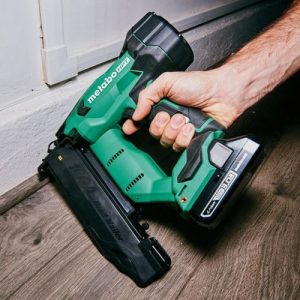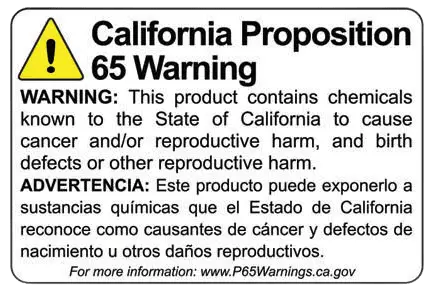 Is there a scarier tool on a job site than a nail gun? Probably no other tool, saws or grinders included, causes more injuries than the powerful nail gun, particularly among those not fully trained or experienced. Although no Canadian statistics are available, the U.S., U.S. Occupational Health and Safety Association (OHSA) report that two out of five residential carpenter apprentices experienced a nail gun injury over a four-year period. And it gets worse; one out of 5 was injured twice, and one out of 10 was injured three or more times!
Is there a scarier tool on a job site than a nail gun? Probably no other tool, saws or grinders included, causes more injuries than the powerful nail gun, particularly among those not fully trained or experienced. Although no Canadian statistics are available, the U.S., U.S. Occupational Health and Safety Association (OHSA) report that two out of five residential carpenter apprentices experienced a nail gun injury over a four-year period. And it gets worse; one out of 5 was injured twice, and one out of 10 was injured three or more times!
Nail gun injuries can occur with any type of nail gun, be it a brad, finishing, flooring, framing, or roofing nailer. And the power source is indifferent to injury as well — corded, cordless, fuelled, or pneumatic.
What does matter is the trigger type and its correct use? The mechanisms may vary, but all nailers rely on the same two basic control: a finger trigger and a contact safety point on the nose. The issue becomes the order in which the controls are activated. For example; can the trigger be held down, allowing rapid refiring of nails, or must the trigger be released each time for each nail? The safety advantage of the latter is obvious.
The safest — the full sequential trigger
The sequential trigger will only allow a nail to be fired when the controls are activated in a certain order. First, contact with the material — the safety contact tip must be pushed into the workpiece. Then, the user squeezes the trigger to discharge a nail. Both the safety contact tip and the trigger must be released and activated again to fire a second nail. Nails cannot be bump-fired. To fire multiple nails, the process must be repeated from the start. The sequential goes by other names, such as the single shot trigger, restrictive trigger, or trigger fire mode.
Almost as good — the single sequential trigger
With this trigger, the safety contact tip must be depressed for the first nail to be fired. With another squeeze of the trigger, a second nail can be fired if the safety tip stays in contact. This can speed up the work but adds the risk of a dangerous, unintended misfire.
According to the U.S.-based Centre of Construction Research and Training (CPWR), the following brands offer sequential firing: Surebonder, DeWalt, Paslode, Senco, Stanley Bostitch, and Hitiachi. This is not intended to be a full or complete listing. It’s important that purchasers research the features of nail guns before they make a final choice. Furthermore, as safe as the sequential trigger sounds, the tools are not totally foolproof. That’s because some manufacturers have a switch that can deactivate the sequential trigger, turning it into a contact trigger. Be aware!
Not so good — Contact triggers
With a contact trigger, the safety contact and trigger are activated in any order. Push the safety contact tip first and then squeeze the trigger and ‘pop!’ — a nail is fired. Or, squeeze the trigger first and then push the safety contact tip and ‘pop!’— a nail is fired. The problem is that if the trigger is kept squeezed, a nail will be driven each time the safety contact is pushed in. It may increase the rapidity of nailing and speed up the job, but consider the risk of accidentally firing a nail. You just have to accidentally press the gun barrel against your leg or bump into someone and it fires. The contact rigger goes by other names, like bump trigger, multi-shot trigger, successive trigger, dual-action, touch trip, contact trip, and bottom fire.
As the OHSA points out, less experienced workers not accustomed to the recoil of the powerful tool may push hard on the tool and thus inadvertently allow for a double fire. The wood may split and the nail could drive off in an unknown direction at high speed.
Not any better —Single actuation triggers
The idea here is not much different from the contact trigger. The variation is that even if the trigger is released after the first nail is fired, the gun simply slid into the next position when the safety contact tip makes contact with something, hopefully, the desired material and not a head, leg, or chest. Since it is common and natural for workers to carry the tool with a finger on the trigger, when even depressed, accidents can happen.
Don’t tamper with the safety features!
While some manufacturers have a switch to deactivate their full or single sequential triggers, some workers may go further, even removing the spring from the safety contact tip in order to speed up firing. Every manufacturer will strongly warn against tampering. Being found with modified equipment after an accident occurs can also land the worker and his employer in very hot water with safety and legal officials as well.


